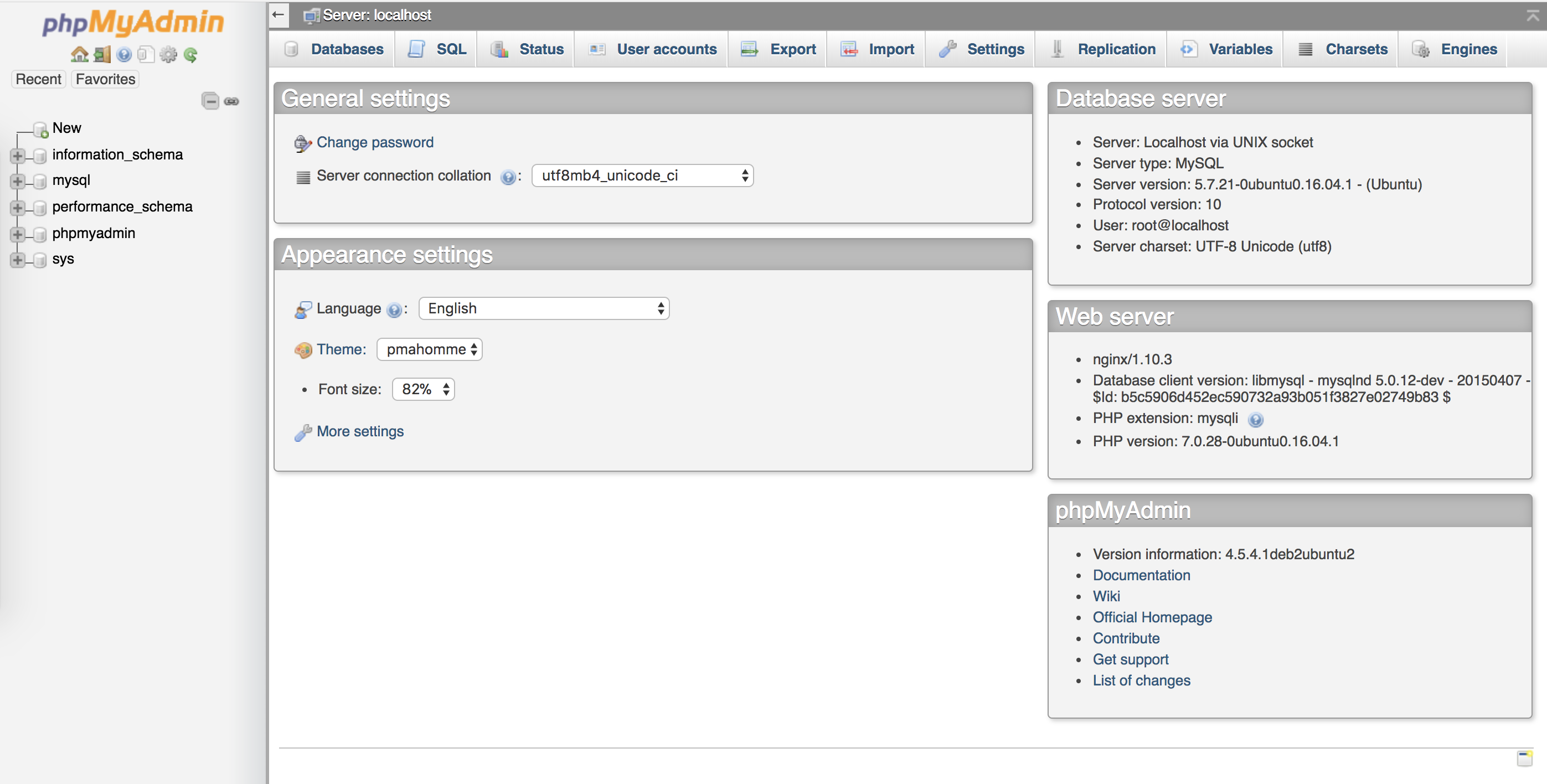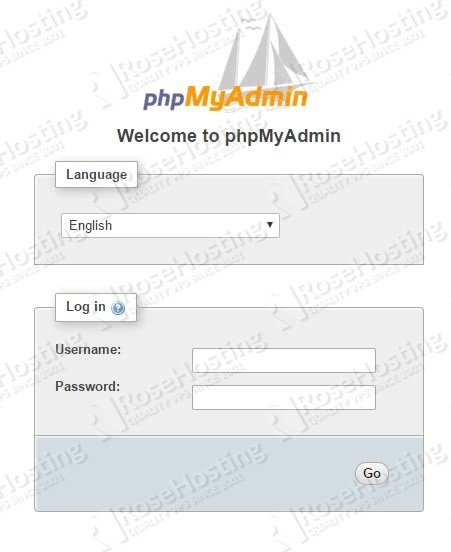
- #Cannot access phpmyadmin ubuntu 16.04 how to
- #Cannot access phpmyadmin ubuntu 16.04 update
- #Cannot access phpmyadmin ubuntu 16.04 password
#Cannot access phpmyadmin ubuntu 16.04 password
This means that you have already MySQL installed and you have a root user for it and a password that you know as well. RequirementsĪs previously mentioned, we will assume that you have already installed the LAMP stack installed in your system (Apache, MySQL and PHP).
#Cannot access phpmyadmin ubuntu 16.04 how to
In this article, we'll show you how to install PHPMyAdmin in your Ubuntu 16.04 based server (assuming that you have already the LAMP Stack installed). If you are working in a server without a web hosting control panel, like Plesk, where this tool is already integrated and ready to use, you will need to install PHPMyAdmin by yourself.

Whatever the people say, using a graphical interface to manage databases is a lot easier than manipulating everything from the CLI. You can access it at and log in with your MySQL username and password.Although a lot of users don't find the necessity of installing a complex MySQL database manager, because they prefer to use simpler tools, like adminer, there are other that prefer reliable and robust solutions as PHPMyAdmin. Step 5: Test and Verify phpMyAdmin Installation on Ubuntu 16.04

With this step, the installation of phpMyAdmin is completed. Mqqqqqqqqqqqqqqqqqqqqqqqqqqqqqqqqqqqqqqqqqqqqqqqqqqqqqqqqqqqqqqqqqqqqqqqqqqqqqqqqqqqqqqqqqqqqqqqqqqqqqqqqqqqq Step 4: Set the Password for the phpMyAdmin UserĪnd finally set a password for the ‘phpmyadmin’ user in MySQL X Configure database for phpmyadmin with dbconfig-common? x X Otherwise, you should probably choose this option. X Details on what needs to be done should most likely be provided in /usr/share/doc/phpmyadmin. X manually, or if your database has already been installed and configured, you should refuse this option x X If you are an advanced database administrator and know that you want to perform this configuration x X This can be optionally handled with dbconfig-common. X The phpmyadmin package must have a database installed and configured before it can be used. On the next screen, select YES to configure a database for phpMyAdmin with dbconfig-common qqqqqqqqqqqqqqqqqqqqqqqqqqqqqqqqqqqqqqqqqq Configuring phpmyadmin qqqqqqqqqqqqqqqqqqqqqqqqqqqqqqqqqqqqqqqqqqq Mqqqqqqqqqqqqqqqqqqqqqqqqqqqqqqqqqqqqqqqqqqqqqqqqqqqqqqqqqqqqqqqqqqqqqqqqqqqqqqqqqqqqqqqqqqj X Web server to reconfigure automatically: x X Please choose the web server that should be automatically configured to run phpMyAdmin. When you will be prompted to select a web server to configure, hit the space bar to select Apache2 and Enter to confirm and continue lqqqqqqqqqqqqqqqqqqqqqqqqqqqqqqqqu Configuring phpmyadmin tqqqqqqqqqqqqqqqqqqqqqqqqqqqqqqqqq PhpMyAdmin will be installed along with its dependencies and all necessary PHP modules. The package is included in the official Ubuntu 16.04 repository and it can be easily installed with the command below apt-get install phpmyadmin Once Apache, PHP, and MySQL are installed, we can go ahead and install phpMyAdmin.

If you don’t have it already installed on your server, you can do it by executing the following commands apt-get install apache2 php mysql-server Step 3: Install phpMyAdmin on Ubuntu 16.04 PhpMyAdmin requires a LAMP (Linux, Apache, MariaDB/MySQL, PHP) stack.
#Cannot access phpmyadmin ubuntu 16.04 update
Login to your Ubuntu 16.04 VPS via SSH as user root ssh make sure that you have the latest version of all installed packages apt-get update & apt-get upgrade Step 2: Install LAMP Stack – (Linux, Apache, MariaDB/MySQL, PHP)

We have an updated version of this tutorial – How to Install phpMyAdmin on Ubuntu 20.04 Installing phpMyAdmin on Ubuntu 16.04 is an easy task if you carefully follow the steps below. You can easily import and export tables, create and modify users, and so on, all via an easy-to-use GUI. You e can easily create, rename, delete and edit databases, tables, or fields, execute SQL commands. Many developers need to interact and manipulate with their databases, but not all of them are comfortable with SQL commands, and this is where phpMyAdmin comes in handy.


 0 kommentar(er)
0 kommentar(er)
